Anti-TNFa dans les uvéites chroniques non infectieuses : une étude observationnelle rétrospective à propos de 151 patients
Objective: the aim of this study was to assess real-world efficacy and safety of anti-TNF therapies in patients with chronic or recurrent non-infectious uveitis. Methods: patients were retrospectively included in this monocentric study in the University Hospital of Nantes. Data were collected when a...
| Auteurs principaux : | , , , , |
|---|---|
| Collectivités auteurs : | , |
| Format : | Thèse ou mémoire |
| Langue : | anglais français |
| Titre complet : | Anti-TNFa dans les uvéites chroniques non infectieuses : une étude observationnelle rétrospective à propos de 151 patients / Pierre-Antoine Quintart; sous la direction de Hélène Masse |
| Publié : |
Nantes :
Université de Nantes
, 2023 |
| Accès en ligne : |
Accès Nantes Université
|
| Note de thèse : | Reproduction de : Thèse d'exercice : Médecine. Ophtalmologie : Nantes : 2023 |
| Sujets : | |
| Documents associés : | Reproduction de:
Anti-TNFa dans les uvéites chroniques non infectieuses |
| Résumé : | Objective: the aim of this study was to assess real-world efficacy and safety of anti-TNF therapies in patients with chronic or recurrent non-infectious uveitis. Methods: patients were retrospectively included in this monocentric study in the University Hospital of Nantes. Data were collected when available before initiation of the treatment, one month after (M1), at M3, M6, M12, and M24. We collected demographic information (gender, age), data about the treatment (type, indication), its efficacy (distance visual acuity (VA), laser flare meter (LFM), central macular thickness (CMT), presence of retinal vasculitis, visual field in case of Birdshot chorioretinopathy), and its safety. Results: 151 patients were included in the study (160 treatments). Most participants were women (60%) with a mean age of 46 +- 17 years. Usually, used anti-TNF therapy was adalimumab (90%) for inflammation (56%), as a second-line of corticosteroid-sparing therapy (54%). This resulted in significant corticosteroid tapering, with a median dose dropping from 10 mg at baseline to 5 mg at the last known visit, allowing tapering below 7 mg a day in 80% of the patients. Less than a third of the patients had idiopathic uveitis, and the main part of the diagnosis were sarcoidosis, Birdshot chorioretinopathy, Behçet s disease, or rheumatologic diseases. CMT and LFM decrease were statistically significant at each appointment. VA significantly improved from M6 onward. We also observed an improvement of the vasculitis rate, and of the Mean Defect on the visual field in case of Birdshot chorioretinopathy. We found no significant new safety concerns, the main adverse events reported being pain or cutaneous effects, with few serious infections. Prudence is still needed anyway about tuberculosis reactivation or demyelination. 70% of the patients who stopped the treatment for remission did not relapse. Conclusion: this study highlights real-life efficacy and safety of anti-TNF therapies. Objectif : le but de cette étude était d'évaluer l'efficacité et la sécurité des anti-TNFa chez les patients atteints d'uvéite non infectieuse chronique ou récurrente. Méthodes : les patients ont été inclus rétrospectivement dans cette étude monocentrique au CHU de Nantes. Les données ont été recueillies, si disponibles, avant l'initiation du traitement, un mois après (M1), à M3, M6, M12 et M24. Nous avons recueilli des informations démographiques (sexe, âge), sur le traitement (type, indication), son efficacité (acuité visuelle à distance (AV), laser flare meter (LFM), épaisseur maculaire centrale (EMC), présence d'une vascularite rétinienne, champ visuel en cas de choriorétinopathie de Birdshot), et sa sécurité. Résultats : 151 patients ont été inclus (160 traitements). La plupart étaient des femmes (60 %) avec un âge moyen de 46 +- 17 ans. L anti-TNF généralement utilisé était l'adalimumab (90 %) pour une inflammation (56 %), en deuxième ligne d'épargne corticoïde (54 %). Cela a permis une épargne significative avec une dose de corticoïde inférieure à 7 mg par jour chez 80% des patients. Moins d'un tiers des patients présentait une uvéite idiopathique et les diagnostics les plus fréquents étaient la sarcoïdose, la choriorétinopathie de Birdshot, la maladie de Behçet ou des pathologies rhumatologiques. La diminution de l EMC et du LFM était statistiquement significative à chaque rendez-vous. L'AV s'est améliorée de façon significative à partir de M6. Nous avons également observé une amélioration du taux de vascularite, et de la déviation moyenne (Mean Defect (MD)) au champ visuel en cas de choriorétinopathie de Birdshot. Nous n'avons pas objectivé de nouveaux problèmes de sécurité, les principaux effets indésirables rapportés étant des douleurs ou des effets cutanés, avec peu d'infections graves ; mais la prudence reste de mise concernant le risque de réactivation de tuberculose ou de démyélinisation. 70% des patients qui ont arrêté le traitement pour rémission n ont pas récidivé. Discussion : cette étude souligne l'efficacité et la sécurité des anti-TNF en vie réelle. |
|---|---|
| Variantes de titre : | Anti-TNFa therapies in non-infectious uveitis: an observational retrospective study about 151 patients |
| Notes : | L'impression du document génère 56 p. Autre(s) contribution(s) : Michel Weber (Président du jury) ; Chloé Couret, Julie Graveleau (Membre(s) du jury) |
| Bibliographie : | Bibliogr. 98 réf. |

 Nantilus
Nantilus

